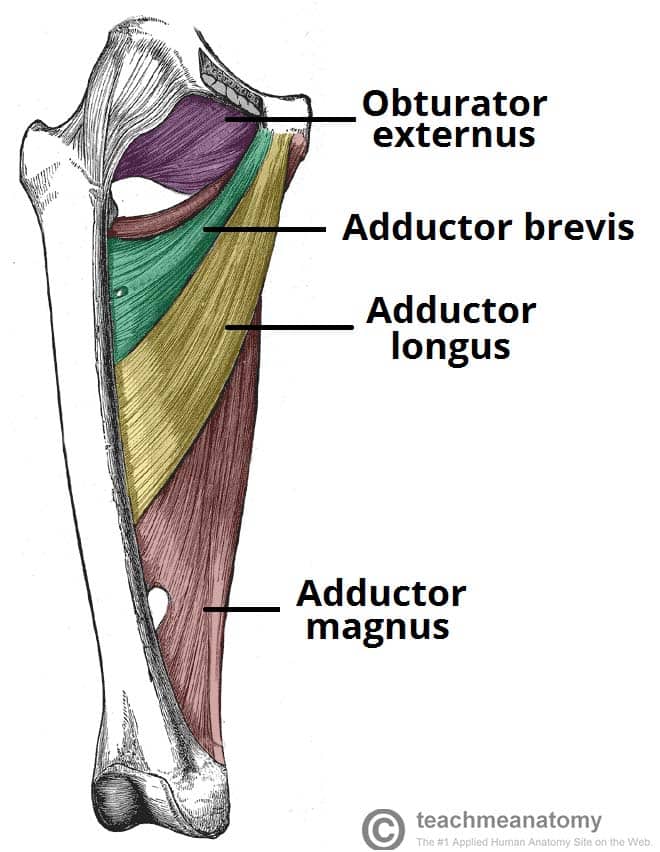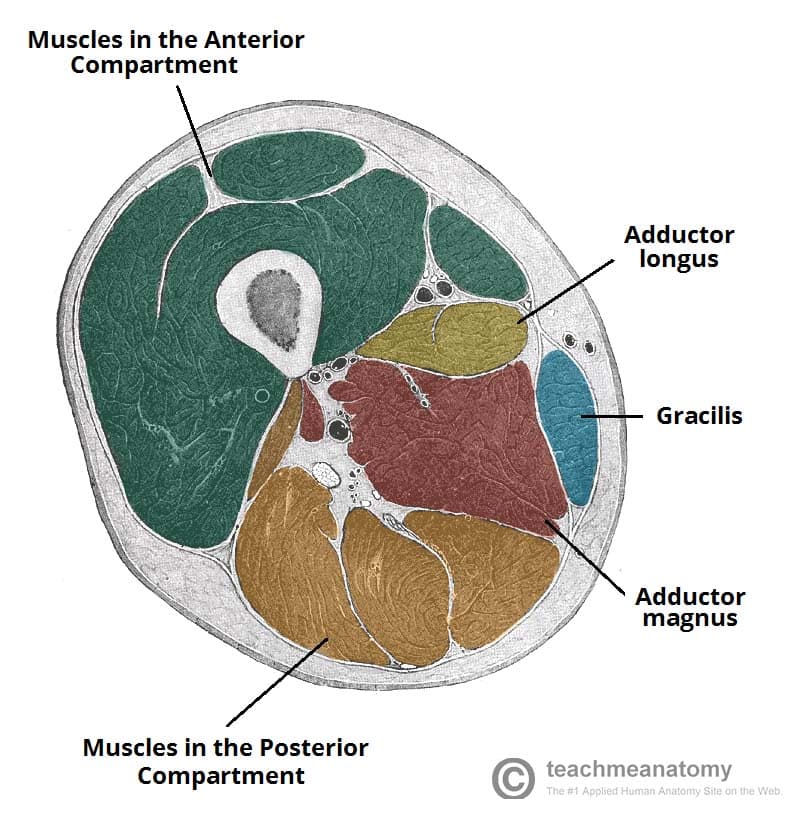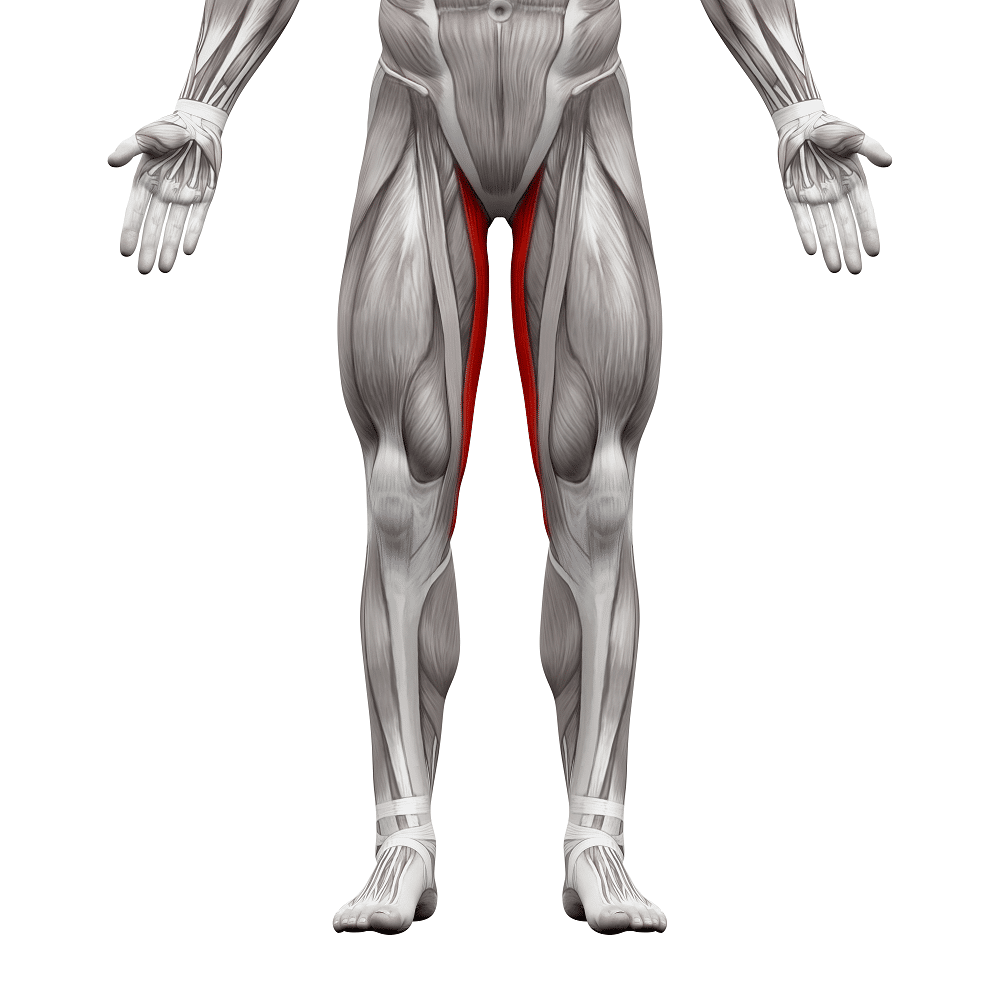The muscles in the medial compartment of the thigh are collectively known as the hip adductors.
There are five muscles in this group; gracilis, obturator externus, adductor brevis, adductor longus and adductor magnus.
All the medial thigh muscles are innervated by the obturator nerve, which arises from the lumbar plexus. Arterial supply is through the obturator artery.
In this article, we shall examine the anatomy of the muscles of the medial thigh – their attachments, actions and clinical correlations.
Adductor Magnus
The adductor magnus is the largest muscle in the medial compartment of the thigh.
It is comprised of two parts – an adductor component and a hamstring component.
- Attachments
- Adductor – Originates from the inferior rami of the pubis and the rami of ischium, attaches to the linea aspera of the femur.
- Hamstring part – Originates from the ischial tuberosity, attaches to the adductor tubercle and medial supracondylar line of the femur.
- Actions:
- Adductor – Adduction and flexion of the thigh
- Hamstring – Adduction and extension of the thigh.
- Innervation:
- Adductor – Obturator nerve (L2-L4)
- Hamstring part – Tibial component of the sciatic nerve (L4-S3).

Fig 1 – Muscles of the medial thigh. The overlying muscles in the anterior compartment have been removed.
Adductor Longus
The adductor longus is a large, flat muscle. It partially covers the adductor brevis and magnus. The muscle forms the medial border of the femoral triangle.
- Attachments: Originates from the pubis bone of the pelvis and expands into a fan shape. It has a broad distal attachment along the linea aspera of the femur.
- Actions: Adduction of the thigh.
- Innervation: Obturator nerve (L2-L4).
Adductor Brevis
The adductor brevis is a short muscle, lying underneath the adductor longus.
It separates the anterior and posterior branches of the obturator nerve and is an important anatomical landmark within the medial thigh.
- Attachments: Originates from the body of pubis and inferior pubic rami. Attaches to the linea aspera on the posterior surface of the femur (proximal to the adductor longus attachment).
- Actions: Adduction of the thigh.
- Innervation: Obturator nerve (L2-L4).
Obturator Externus
The obturator externus is one of the smaller muscles of the medial thigh and it is located superiorly within the compartment.
- Attachments: Originates from the membrane of the obturator foramen and adjacent bone. It passes under the neck of femur and attaches onto the posterior aspect of the greater trochanter.
- Actions: Adduction and lateral rotation of the thigh.
- Innervation: Obturator nerve (L2-L4).
Gracilis
The gracilis is the most superficial and medial of the muscles in this compartment. It crosses at both the hip and knee joints.
- Attachments: Originates from the inferior rami of the pubis and the body of the pubis. It descends down the medial aspect of the thigh and attaches to the medial surface of the tibial shaft.
- Actions: Adduction of the thigh at the hip and flexion of the leg at the knee.
- Innervation: Obturator nerve (L2-L4).

Fig 3 – Cross section of the inferior thigh, showing some of the medial thigh muscles. The adductor brevis and obturator externus attach superiorly in the thigh, and so are not visible in this cross-section.
Clinical Relevance: Injury to the Adductor Muscles
Strain of the adductor muscles is the underlying cause of what is colloquially known as a ‘groin strain‘. The proximal part of the muscle is most commonly affected, tearing near their bony attachments in the pelvis.
Groin injuries usually occur in sports that require explosive movements or extreme stretching. Treatment of any muscle strain should utilise the RICE protocol – rest, ice, compression and elevation.
